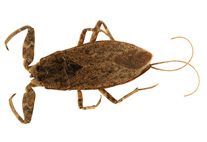Abstract
The nominal taxon ‘Helix’ arguineguinensis Seddon & Aparicio, 1998 is a narrow-range endemic from Gran Canaria (Canary Islands, Spain) known only from few localities in the vicinity of Argüineguin in the south-western part of the island (Mousson, 1874; Wollaston, 1878; Seddon & Aparicio, 1998). The narrow range of the taxon and potential threats to its habitat as a consequence of ongoing urbanisation of the area justify its classification in the category ‘critically endangered’ of the International Union for Conservation of Nature (IUCN) as proposed by Cuttelod et al. (2011). The species has tentatively been included in the genus Xerotricha Monterosato, 1892 (Bank et al., 2002) or classified as possibly belonging to Monilearia Mousson, 1872 on the basis of general shell morphology (Ibáñez et al., 2006). The genus Monilearia is believed to be closely related to the genera Cochlicella Férussac, 1821 in Férussac, 1821–1822 Prietocella Schileyko & Menkhorst, 1997 and Obelus Hartmann, 1842 in Hartmann (1840–1844) because it shares with these taxa the presence of a vaginal appendage with a peculiar morphology similar to the generalized penial appendix of orthurethran gastropods as described by Schileyko (1984) (Fig. 1). Schileyko (1972) introduced Cochlicellinae as a subfamily of the Hygromiidae. The phylogenetic affinity of this family-level taxon has been variously interpreted (Nordsieck, 1987, 1993; Schileyko, 1991; Schileyko & Menkhorst, 1997; Steinke et al., 2004; Manganelli et al., 2005; Wade et al., 2006, 2007), but recent molecular analyses of Palearctic Helicoidea by Razkin et al. (2015) have lend support to the hypothesis that it represents a tribe (Cochlicellini) within the family Geomitridae as newly delimited by these authors. Diagnostic for the genera in Cochlicellini are details of the anatomy of the vaginal appendage consisting in all anatomically known species of a tubular, comparatively wide section (A1) inserting into the vagina opposite of the insertion point of the penis. Attached apically to the A1 section, the A2 section follows, which may be developed as a curved, finger-like portion ending in a blind sac (Obelus), a rudimentary sac (Cochlicella), or as one (Monilearia) or two to four (Prietocella) propulsory organs with narrow central ducts (Fig. 1B–E, see also Ibáñez et al., 2003). The thin tubular A4 section (reduced in Prietocella) inserts laterally of the blind sac (Obelus and Cochlicella) or apically into the propulsory organ (Monilearia) ending distally (in relation to the insertion point of the organ into the vagina) in unbranched or branched glands (A5 section), the latter inserting directly into the propulsory organs in Prietocella (Fig. 1). If the homology with the reconstructed penial appendix of orthurethran gastropods with the appendage of Cochlicellini (in which then the A3 section is reduced) is really justified or if it represents a highly derived state of the dart apparatus of other Palearctic Helicoidea is beyond the scope of this short note, but for ease of comparison the nomenclature of the sections is retained here.

